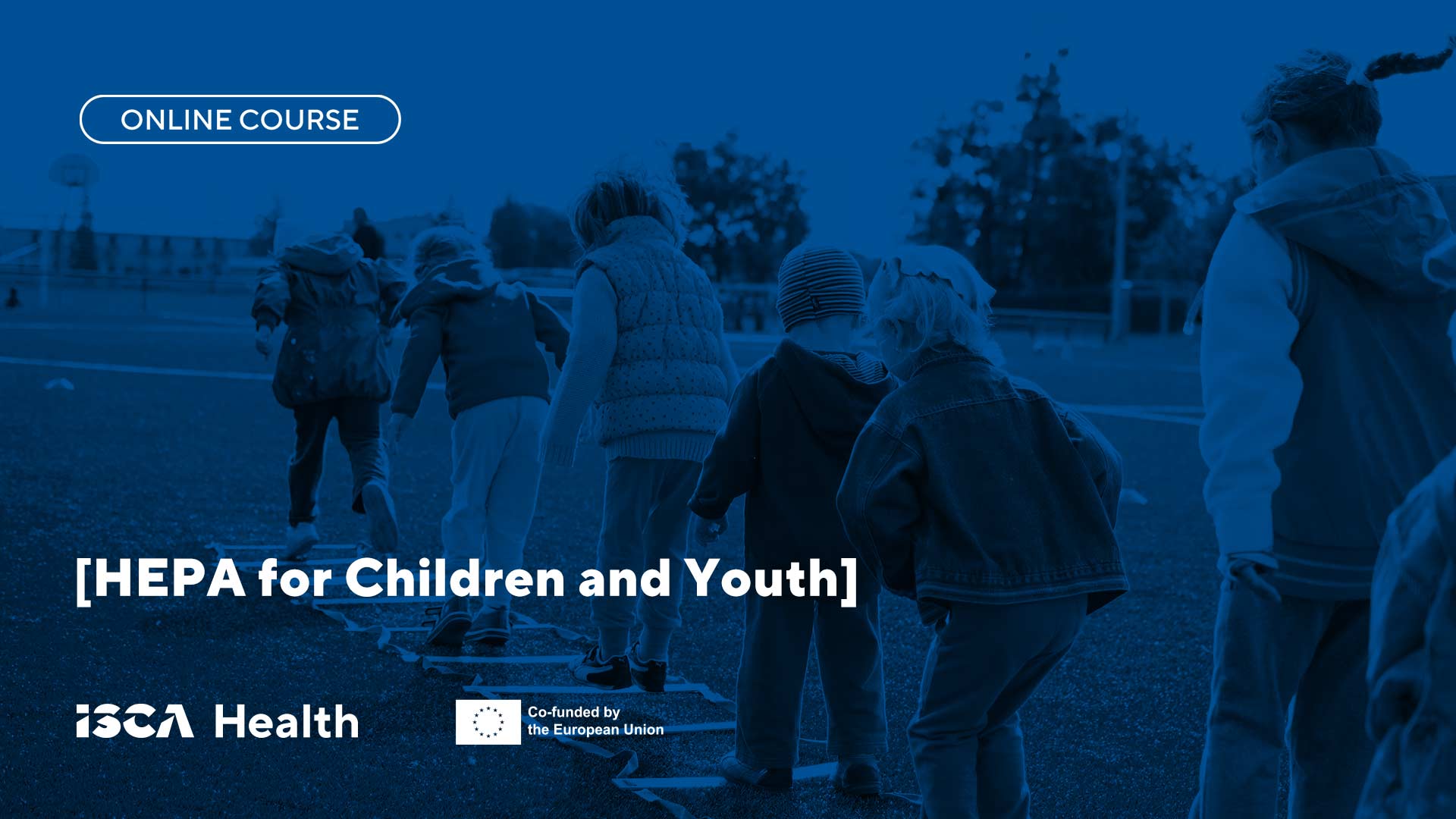Module 3: How to fit HEPA and physical literacy in your backpack for early-age education

Being physically active regularly is vital for all of us. It improves our health, wellbeing and helps us live longer, more active lives. And, it’s especially important for children. Actually, physical education, physical activity and sport are “fundamental rights for all” – and, as such, constitute important components of equitable and quality education (SDG 4.1). Being active from an early age, as a normal part of daily life, can establish a positive pattern that can last a lifetime.
Yet, 1 in 3 children in the WHO European Region are living with overweight or obesity, and these rates are still steadily growing (WHO European Regional Obesity Report 2022). During the Covid-19 pandemic, the situation has deteriorated even further, especially among the younger generation. Rates of mental ill-health and depression are skyrocketing.
This is, in part, linked to the worrying level of physical inactivity among children and youth.
Promoting health and wellbeing for lifelong learning should start at an early age. This seems kind of obvious. But if it takes a village to raise a kid, what does it take to move children and youth? What does it take to educate kids through movement?
We believe part of the answer lies within the concept of physical literacy, which ‘recognizes that humans learn for different reasons, whether for survival, social connection, or self-actualization’ (Ydo, 2020). Why? Because physical literacy can be learned in different aspects of school and does not stop when we finish school. And because physical literacy provides the basis for lifelong participation in physical activity, not to mention the subsequent lifelong health benefits this brings.
Module 3 of 
🔹 Look at the problem: be exposed to different forms of sedentary (screen) behaviours among children and youth
🔹 Learn why how we MOVE is important: understand the concept of physical literacy
🔹 Make it interesting and fun: diversify and gamify to attract kids to healthy lifestyle choices
🔹 Bring all players on board: Learn how to map and work with your stakeholders (parents included)
Glossary of Key Terms
What is physical activity?
In the context of this module, we will be using a more specific definition than the generic Caspersen definition introduced at the beginning of this e-course (see Glossary of key terms). The purpose is to fit tightly to the physical literacy-focused theme -a key theme of this module- which is about connecting the physical and cognitive when moving.
Physical activity involves people moving, acting, and performing within culturally specific spaces and contexts, and are influenced by a unique array of interests, emotions, ideas, instructions, and relationships.
What is physical development?
Physical development is the development of a child’s control over their body, including control over muscles (gross and fine motor movements), and coordination of these movements.
What is physical literacy?
Physical literacy embraces skills and attributes – the motivation, confidence, physical competence, knowledge, and understanding – to value and take responsibility for engagement in physical activities and movement across the life course. It can be understood as a process and as an outcome that individuals pursue through an interaction of their physical, emotional, social, and cognitive learning.
What are fundamental movement skills?
Fundamental movement skills are movement patterns that involve various body parts and provide the basis for complex skills used in physical activity and sport.
About the contributors
| Name | Profession | Organisation | Country |
| Anna Chalkey🔗 | Research Fellow | Western Norway University of Applied Sciences | 🇳🇴 |
| Rose-Marie Repond🔗 | Researcher | European Physical Education Association (EUPEA) | 🇱🇺 |
| Dean Dudley🔗 | Associate Professor (Health and Physical Education) | Macquarie University | 🇦🇺 |
| Andrew Daly-Smith🔗 | Researcher and Reader in Healthy Childhood | Faculty of Health Studies, University of Bradford | 🇬🇧 |
Let’s get to the core of the content.
